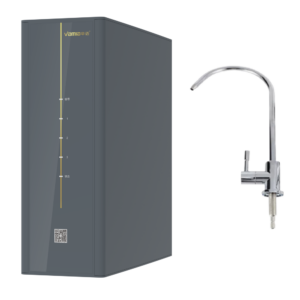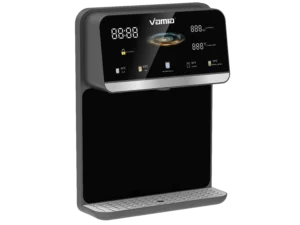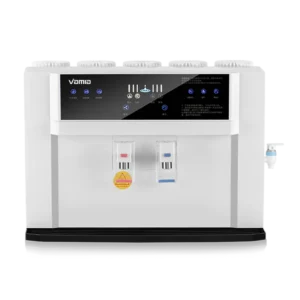Water Quality Testing of Water Purifier Output: How to Judge the Quality of Water?
Ensuring the quality of water from a water purifier is crucial for our health.
There are several ways to test and judge the quality of the water output.
There are several ways to test and judge the quality of the water output.
One of the simplest methods is to check the physical appearance of the water. Pure water should be clear and colorless.
If the water from the purifier has a cloudy appearance, it may indicate the presence of sediment or other particles.
You can pour the water into a clear glass and let it sit for a while. If any sediment settles at the bottom,
it means the water purifier may not be effectively filtering out these particles.

If the water from the purifier has a cloudy appearance, it may indicate the presence of sediment or other particles.
You can pour the water into a clear glass and let it sit for a while. If any sediment settles at the bottom,
it means the water purifier may not be effectively filtering out these particles.

Another important aspect is the taste and odor of the water. Clean water should be tasteless and odorless.
If the water has a strange taste, like a metallic or chlorine – like taste, or an unpleasant odor, it could be a sign that the water is still
contaminated. A chlorine taste might suggest that the water purifier’s carbon filter is not working properly as carbon filters are designed to remove chlorine.
contaminated. A chlorine taste might suggest that the water purifier’s carbon filter is not working properly as carbon filters are designed to remove chlorine.
Chemical tests can also be used to accurately determine the water quality.
There are test kits available in the market that can measure the levels of various contaminants such as pH,

total dissolved solids (TDS), and the presence of heavy metals. A pH test kit can tell you if the water is acidic, neutral,
or alkaline. The ideal pH range for drinking water is between 6.5 – 8.5. A TDS meter can measure the amount
There are test kits available in the market that can measure the levels of various contaminants such as pH,

total dissolved solids (TDS), and the presence of heavy metals. A pH test kit can tell you if the water is acidic, neutral,
or alkaline. The ideal pH range for drinking water is between 6.5 – 8.5. A TDS meter can measure the amount
of dissolved substances in the water. High TDS levels may indicate the presence of minerals, salts, or other contaminants.
Biological testing is also essential to check for the presence of bacteria, viruses, and other microorganisms.
Water Purifier Factory, Water Purifier For Home, Water Purifier Machine,Water Purifier, Water Filter Purifier System
Water Purifier Factory, Water Purifier For Home, Water Purifier Machine,Water Purifier, Water Filter Purifier System
Although it’s more difficult to conduct biological tests at home compared to chemical tests, some advanced
water purifiers come with built – in sensors or indicators that can detect the presence of certain microorganisms.
If you suspect a biological contamination problem, you can also send a water sample to a professional laboratory for
comprehensive testing. By using these methods to test the water quality of your water
purifier’s output, you can ensure that the water you drink is safe and of high quality.
Water Quality Testing of Water Purifier Output: How to Judge the Quality of Water?

